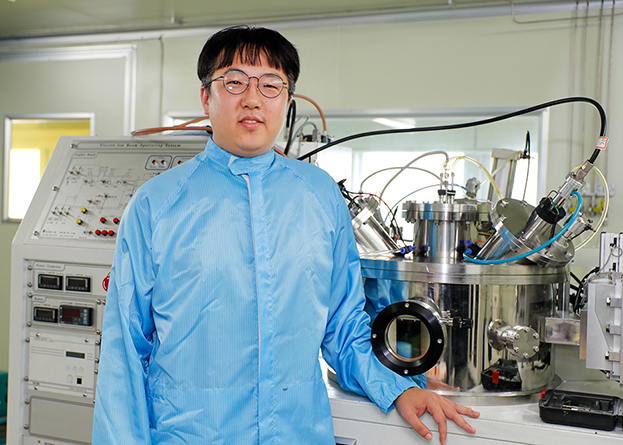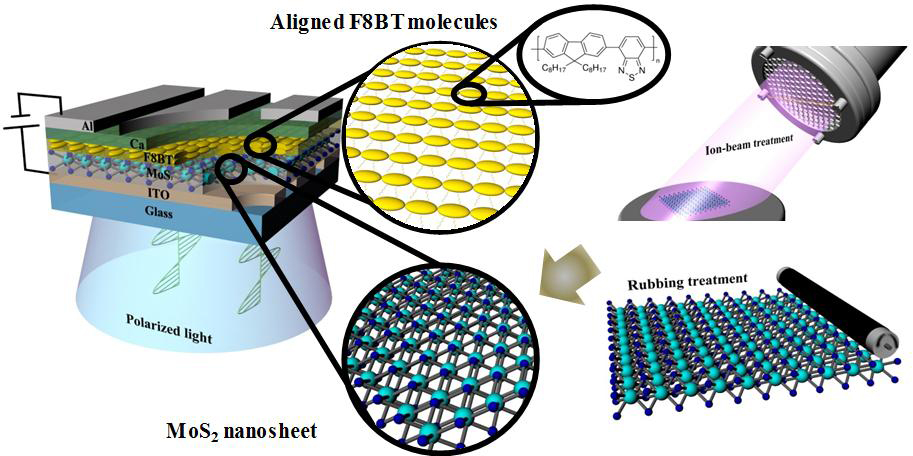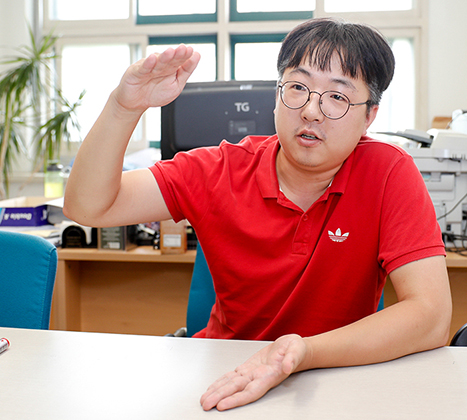Choi Gyu-jin of Department of Physics Develops 'High Resolution Display' Platform Technology N
No.88994- Writer pr
- Date : 2017.09.06 16:16
- Views : 8088
Choi Gyu-jin in the PhD course at the Department of Physics considerably increases OLED life and light efficiency
Published in the recent issue of the global academic journal 'Advanced Materials'
Increased possibility to apply in high resolution displays
[September 4, 2017]
Published in the recent issue of the global academic journal 'Advanced Materials'
Increased possibility to apply in high resolution displays
[September 4, 2017]

<Choi Gyu-jin who is currently in the PhD course at the YU Department of Physics developed platform technologies that can significantly increase light efficiency of displays>
Choi Gyu-jing (29, PhD) of the Department of Physics at YU developed platform technologies that can significantly improve the light efficiency of OLED (organic light emitting diode) display to receive attention from academic circles and industries.
Choi substituted organic substances used for the hole transport layer of OLED elements with the secondary mineral material, molybdenum disulfide (MoS2) nanosheet to increase the life of materials. The hole transport layer was surface treated with ion beam and rubbing methods to acquire light with very high polarization.
Recently, the importance of displays has grown greatly in the advanced electronic device sector, so Choi's research results are receiving more attention. Up until now, research on OLED polarized lighting, together with improving efficiency of displays, has been carried out continuously. Most studies adopted the method of strongly rubbing materials below the illuminating layer in the display to arrange the illuminating material molecules in one direction.

<Mimetic diagram on surface treatment of the hole transport layer MoS2 nanosheets with rubbing method and ion beams to align the display lighting layer molecules>
Choi said, "The polyimide material used in the past rubbing method is an insulator. Therefore, no matter how thin it is applied, it rapidly lowers the efficiency of materials. In addition, it is difficult to obtain clean lighting images due to surface scratches caused by strong rubbing." He went on saying, "In this study, MoS2 nanosheet was used for the hole transport layer, and obtained synergy effects by applying highly straight ion beams and rubbing methods simultaneously. Accordingly, by arranging the hole transport layer molecules in a straight line, it was possible to align the illuminating material molecules on top of it and thus enhance polarization by more than two times other studies. In particular, ion beams can help remove scratches caused by rubbing, and therefore, it enhanced the applicability of this in high resolution displays."

Choi's research results will be published in the September issue in the world-acclaimed academic journal in the materials engineering sector <Advanced Materials>, impact factor (IF) 19.79.
The corresponding author YU Professor of Physics Kwak Jin-seok (48) said, "The research results is valuable in not only that highly polarized illuminating materials that can deduce practical efficiency improvement of OLED and LCD displays were developed, but that it is the development of highly polarized light source that can be applied to various optical materials or optical devices and optical measuring instruments."
The corresponding author YU Professor of Physics Kwak Jin-seok (48) said, "The research results is valuable in not only that highly polarized illuminating materials that can deduce practical efficiency improvement of OLED and LCD displays were developed, but that it is the development of highly polarized light source that can be applied to various optical materials or optical devices and optical measuring instruments."
Choi said, "My main field of research is optical materials." He added, "As I increased the possibility of application in the display industry through this study, I will additionally carry out research for improving the optical efficiency of display materials."